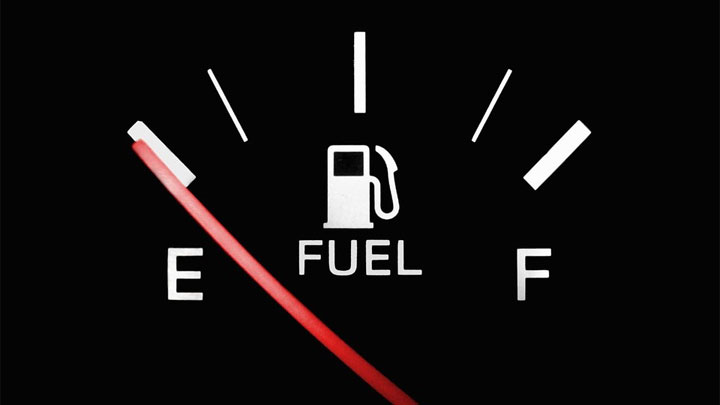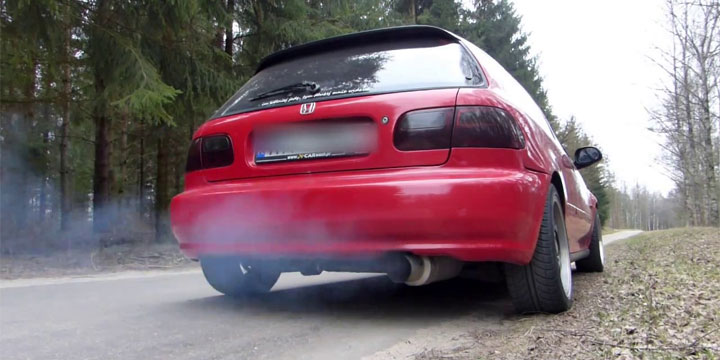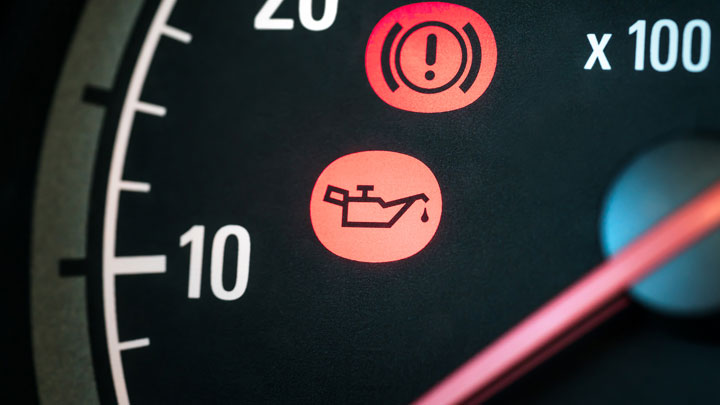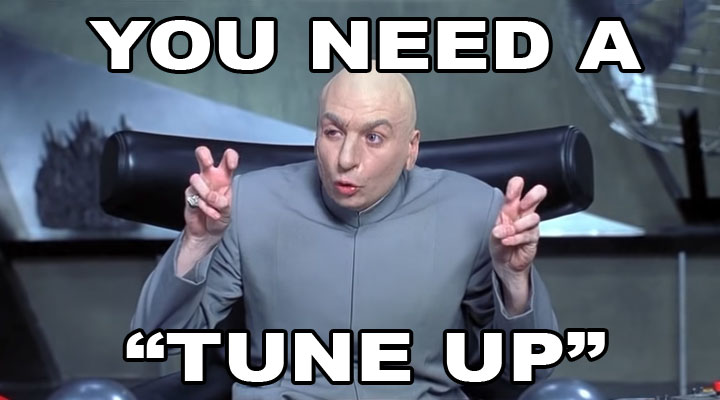Engine oil is like the blood of every car. The engine needs oil to lubricate its moving components and keep them operating smoothly. In fact, engines of all kinds need oil in order to function. It doesn’t matter if you’re using a motorcycle, generator, or even a lawnmower. If it’s got an engine, then it needs to be lubricated with oil.
An engine is filled with parts that are constantly moving and rubbing together. This constant rubbing creates heat from all the friction. You need oil to flow through these moving parts so that it can absorb the heat and prevent overheating.
Oil that’s in good condition accomplishes its task. Old oil doesn’t and need to be replaced. Fortunately, overdue oil change symptoms are easy to spot.
Top 10 Symptoms of Your Car Needing an Oil Change or Tune-up
There are so many different signs and symptoms that will show up and indicate your car needs an oil change and possibly a tune-up (see below for what a tune-up actually means).
When you take your vehicle in for an oil change, the service person will perform an oil and oil filter change as well as inspect your vehicle for leaks and other noticeable issues and then give you additional recommendations on what they think needs to be done.
However, you shouldn’t always depend on them to do this accurately because they might not always catch every issue. This is why you need to pay attention to the signs which indicate that you also need a tune-up of some sorts.
Below are the top 10 signs of your car needing an oil change and/or a tune-up.

Photo: cartreatments.com
#1 – Dark or Dirty Oil
If you’ve never seen clean, new motor oil before, it kind of has a bright amber color to it. But when oil becomes old and dirty from the build-up of residue particles in the engine, then it turns into a much darker, almost black color.
You should make it a habit checking the condition of your oil on a regular basis. Simply remove your oil dipstick and look at the color of the oil on it. Or wipe the end of the dipstick on a paper towel to get a more accurate result. If the oil is dark brown or black, then you need to change your oil.
#2 – Ticking or Tapping Noises
Engine oil gets old and worn after a while. That is why car manufacturers recommend you change your oil every 5,000 miles or so. If you have old oil in your vehicle, then it is likely getting dirtier and thicker.
This will make it harder for the oil to lubricate your engine’s components effectively. As a result, your engine will begin making various metal on metal noises because they are not getting lubricated properly. Get an oil change right away as serious engine damage can result if you ignore the issue.
#3 – Burnt Oil Smell
If the interior cabin of your vehicle is starting to smell like burnt oil, then you know you have some problem with your oil. It usually means there is an oil leak somewhere and causing the oil to drip on hot engine parts.
It also means your engine is likely low on oil and causing your engine to overheat. Take care of the oil leak right away and put in fresh oil.

Photo: cartreatments.com
#4 – Exhaust Smoke
If you live in a cold environment then you are used to seeing vapor emitting from the tailpipe of your vehicle. However, if you actually start seeing blue or gray smoke come out of your exhaust, then you probably have an oil leak.
This goes along with a burnt oil smell and the smoke is the result of not enough oil being in your engine to lubricate its parts, due to the leak. So, get that oil leak fixed and the oil replaced.
#5 – Car Stalling
If you’re driving and your vehicle begins to stall, then you could have a small problem or a bigger issue. A small problem would be if you have a clogged fuel filter or bad spark plugs. Something like this can be replaced with a simple tune-up.
A larger problem would be something like a bad fuel pump or clogged catalytic converter which need replacing.
#6 – Poor Fuel Economy
If you notice your gas mileage is not what it used to be, it can mean you’re overdue for an oil change. As engine oil gets old, it gradually thickens and will eventually turn into an almost sludge-like substance if it’s not changed. Thick oil offers more resistance to the moving parts in your engine which causes it to work harder and use more fuel.
Poor gas mileage can also be due to other reasons but if your oil is dark and much thicker than new oil, a simple oil change will help.

Photo: cartreatments.com
#7 – Overheating
If you don’t have enough oil in your engine or if the oil hasn’t been changed in a while, then it won’t do as good a job of lubricating the engine’s components. This will cause the engine to heat up more and eventually overheat. Getting your oil changed with fresh oil will often take care of the problem.
#8 – Difficulty Starting Engine
If you notice that you’re consistently having problems starting your engine, then you might need to check the connections on top of your battery for corrosion and clean them with a wire brush. If your battery is at least a few years old, it may be time to replace your battery.
You may notice the engine hesitating before it starts up while the lights on the dashboard dim a bit. Clearly, you need a tune-up that involves cleaning the battery posts and terminals or even replacing the battery with a new one.
#9 – Warning Lights
The computers and sensors in vehicles today make it easier for them to detect a problem early on before it gets worse. If you notice an indicator light illuminating on your dashboard, use your owner’s manual to see what that light means. Warning lights will warn you about all kinds of problems such as low battery, a burnt out tail light, transmission malfunction, and so on.
Some newer vehicles even keep track of your oil condition (via sensors or set interval) and will tell you when it’s time to change it. In some instances, the check engine light will come on so you will need to use an OBD2 scanner to check for the specific issue or have a mechanic scan it.
#10 – Shifting Hesitation
If you are driving an automatic vehicle, then you should have no problems when your car shifts gears. But if there is hesitation or lag when you shift gears, it could mean that you need new transmission fluid or filters. Of course, it could mean a worse problem as well. That is why taking your car in for a tune-up will at least detect what the problem is.

Photo: cartreatments.com
What is a Tune-Up?
We’ve all heard the term “tune-up” as it relates to vehicles. You might think a tune-up means getting an oil change and having your windshield washed. But in actuality, there is a lot more to a tune-up than that.
A tune-up means a general maintenance where various components and parts of your vehicle are inspected and replaced if they are worn out. Some of these areas include your fuel filter, PCV valve, air filter, cabin filter, spark plugs, brakes, hoses, belts, and wires.
The service person will also check your idle speed, idle mixture, sensors, and ignition timing. If any of these areas are not normal, they will be adjusted appropriately.
When you take a newer car to the dealership to have a 30k, 50k, 75k, 100k, etc. mile service performed, many of these are essentially tune-ups where various maintenance is done according to a set schedule by the car manufacturer.
Many professional mechanics laugh at the term “tune-up”. It’s comparable to how some professionals in the fitness industry laugh at the term “tone up”. The term “tune-up” in a way was created for marketing purposes but it does the intended job of making sure your vehicle in good working condition and any maintenance necessary is performed.







